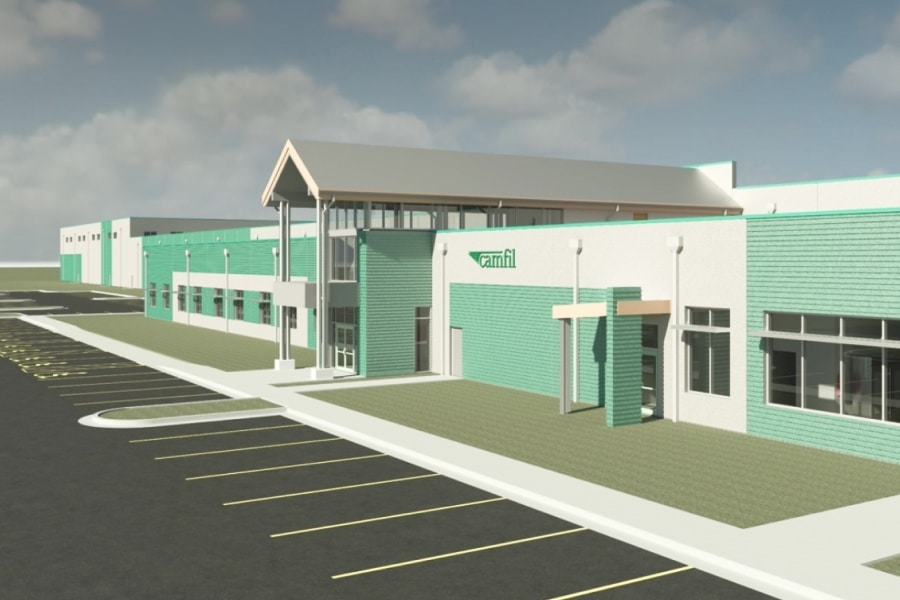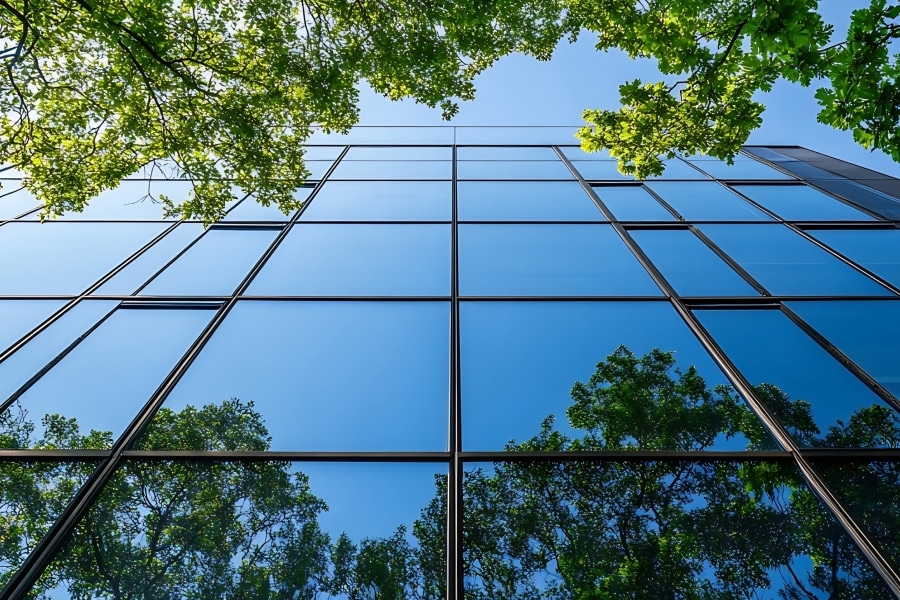Designing buildings as sensory spaces
We all want to live and work in surroundings that make us feel better about ourselves. A comfortable home or workplace in a nice location, perhaps with green space nearby.
According to inclusivity design group Neuro by Design, creating a relaxing atmosphere in the workplace increases well-being and productivity by around 25%. “Inclusive design following biophilic design principles can dramatically increase productivity and reduce sickness rates in the workplace,” it adds.
In recent years the UK government has made much of the need to create a better built environment, coming up with a strategy that included launching a commission whose job it was to investigate how to “promote better design and style of homes, villages, towns and high streets.”
While many of us debate the visual merits—or otherwise—of a building, we can perhaps be more united around how a building makes us “feel”; how our senses react to our surroundings. The issue of occupier welfare has risen to the fore in recent years, with factors such as thermal comfort and the availability of natural light becoming firmly established in the minds of designers and developers.
What is sensory architecture?
Sensory architecture is designing with well-being and the senses—touch, sight, sound, smell, sensitivity to light and dark, etc.—in mind.
In a paper titled “Senses of Place: Architectural Design for the Multisensory Mind,” Charles Spence of the Department of Experimental Psychology at the Crossmodal Research Laboratory at Oxford University, argues that the human senses are playing a significant role in developing new ways of thinking about how to design buildings.
Spence says that while the practice of architecture has “traditionally been dominated by the eye/sight, a growing number of architects and designers have, in recent decades, started to consider the role played by the other senses, namely sound, touch … smell, and, on rare occasions, even taste.”
According to architect Richa Malhotra, when keeping in mind the stimulation of all the sensory organs, architecture “can empower the space and bring harmony between the environment and the user.” She goes on: “Sensory design is human perception, memory and imagination entwined, in order to give recognition to the design and experience of the space.”
Sensory One, a design group that specialises in sensory spaces and interiors, claims that the practice of considering such sensory needs when designing public spaces is growing.
Schools and health care facilities can benefit from being designed with sensory considerations in mind, the group says, with “calm rooms,” dark rooms, interactive areas and garden space, which incorporates sensory equipment helping bolster occupants’ well-being.
Historical influences on sensory architecture
Like many creative movements, sensory architecture is said to have its roots in the work of artists operating outside the mainstream. Important in the development of sensory design were groups like ZERO, in Germany, and Gutai, in Japan, who were at the peak of their powers in the 1950s.
Gutai’s designs included works created by an artist dangling from the ceiling and daubing a canvas on the floor with his feet. While it was deemed bizarre at the time, Jiro Yoshihara, the group’s founder, said: “Gutai art does not transform, it does not falsify matter, Gutai art gives matter life … the artworks must appeal to all senses, to the whole body, and be veritable sensory explosions.”
In Germany, ZERO was led by artists Heinz Mack, Otto Piene and Günther Uecker. According to Shira Wolfe, writing in Artland magazine, they believed in creating art that “focused on the work’s materials and the world in which those materials exist, de-emphasising the role of the artist’s hand with focus on light and space.”
Modern-day sensory architecture projects
While artists led the charge, more recently design groups have responded to the needs of those who benefit from buildings, particularly interiors, catering for the less able.
The DeafSpace Project, for example, was established in 2005 by US architect Hansel Bauman, in conjunction with the ASL Deaf Studies Department at Gallaudet University (GU).
By 2010, GU says, more than 150 DeafSpace architectural design elements were created, addressing what it called the five major touch points between deaf experiences and the built environment: space and proximity; sensory reach; mobility and proximity; light and colour; and acoustics.
“Common to all of these are the principles of community, visual language, promotion of personal safety and well-being,” GU added.
Maggie’s, the cancer care charity adopts a similar approach to sensory experience in architecture. Its facilities are designed to be sensitive to the needs of both people receiving cancer treatment and their loved ones.
Big-name architects including Frank Gehry have designed the charity’s centres. In Manchester, a Maggie’s centre was designed by Foster + Partners. The single storey, natural timber structure focuses around a wide, central spine, where the roof rises in the centre to create a mezzanine level lit with natural light.
Says Maggie’s website: “An integrated glass house extends from the south of the building, providing a space for people to gather and enjoy the therapeutic qualities of nature and the outdoors while the interior palette combines warm, natural wood and tactile fabrics.”
How will sensory architecture be regulated?
Sensory design is making its presence felt among those who create building standards. Last year saw the launch in the UK of PAS 6463 Design for the Mind, the first BSI standard to set out guidance on neurodiversity and the built environment.
Understanding that design should be for everyone is key, says Helen Kane, director of Neuro by Design. She told the RIBA Journal: “Disabled people have taught us lots of things. The typewriter, for instance, was invented in 1808 for an Italian countess who was blind. Access ramps have also proved useful for deliveries. Making provision for a range of people helps everybody.
“Designing for inclusion is not intrusive if you specify features from the beginning of a project. Yes, retrofitting ramps can be expensive, but if you think about a building right from the outset, there is the possibility of improving circulation and helping us all to move more quickly.”
Promoting healthier places for better user outcomes
With the rise of sensory architecture, buildings will increasingly cater for users in ways that those of a few generations ago would have believed unachievable.
Spence, in his paper “Senses of Place: Architectural Design for the Multisensory Mind,” discusses the need to consider the “sound of a space” as well as the look of a building, and to consider the tactility of a structure and its interior.
He concludes his research with these words: “Ultimately, it is to be hoped that as the growing awareness of the multisensory nature of human perception continues to spread beyond the academic community, those working in the field of architectural design practice will increasingly start to incorporate the multisensory perspective into their work.”
By so doing, Spence says, these communities will “promote the development of buildings and urban spaces that do a better job of promoting our social, cognitive and emotional well-being.”











